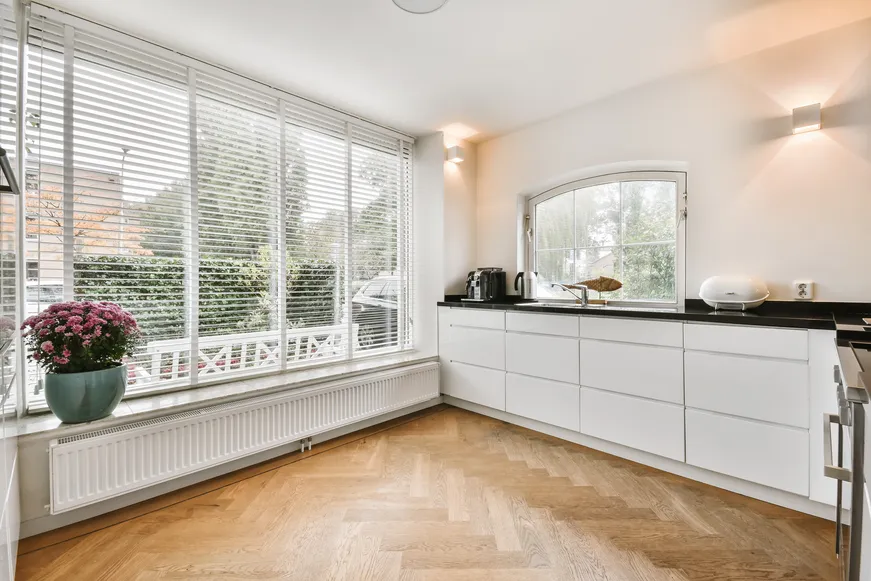Kitchen Floors vs. Cabinets: What Comes First in Kitchen Remodeling?
Many people consider the kitchen as the heart of the because it provides a place for families and friends to socialize. The kitchen space is also usually busy, especially when preparing food and cooking. Turning a kitchen space into a safer and more functional food prep area is fulfilling in the long run.

While a functional, and visually pleasing kitchen can do wonders for a home’s overall appeal and market value, a quality kitchen remodeling process can be a daunting process.
In pursuing and creating an ideal kitchen for your home, you may be wondering whether kitchen floors vs. cabinets should be installed first during kitchen remodeling. Regarding whether kitchen floors or cabinets are first installed in kitchen remodeling, the venture involves a lot of discussion, planning, and designing.
Before starting the journey on a kitchen remodeling project, homeowners can consider the following possible scenarios to see how the process may go:
Will You Raise the Kitchen Floors?
If a homeowner intends to raise flooring above its current level, it is a complex job that must be done before new kitchen cabinets are installed.
By the end of a kitchen renovation, the countertops should be nearly 36 inches, which is the standard working height in USA households. If the remodeling started with new cabinetry before raising the floors, homeowners would end up with low countertops which can be awkward to use.
Will You Repaint Something During Kitchen Remodeling?
Changing the colors of surfaces can ruin a new floor cover as paint can fall in drops and leave irremovable marks. Many renovators treat floors in the last turn if something needs to be repainted during remodeling since it helps prevent the risk of stains and damages.
While paint pigment can be removed from the surface if tackled quickly, things can become more complicated if the floor is made from specialty materials such as textured tiles or natural hardwood.
Floors or Cabinet First?
Here are some of the advantages and drawbacks of making floors and kitchen cabinets a priority for installation:
- Installing Floors First
One significant advantage of putting in the floor first is avoiding cutting the material around islands, free-standing cabinets, and appliances. Laying down the floor first can provide a neat and coordinated look that saves homeowners from worries of installing quarter rounds along the kitchen island or base cabinets.
However, some of the drawbacks of installing flooring first are that homeowners can likely spend more money if the flooring is replaced later since cabinets also need to be removed to replace the flooring.
- Installing Cabinets First
Installing cabinetry first helps avoid many of the issues homeowners would face with doing things the other way around. Homeowners will only waste time and money on flooring they will see. New floors will also be less damaged by starting with installing cabinets.
However, a drawback in starting with a cabinet is that homeowners essentially create a footprint they need to stick with for future renovations. Additionally, installation can be more expensive since flooring needs to be cut to fit around the base cabinets.
Conclusion
The order of a kitchen remodeling process can significantly influence the outcome. It is critical to stick to the proper sequence of activities during the remodeling process to avoid issues and ensure that your renovations in the project are spent wisely.
For more information about kitchen remodeling, you can talk to our experts at Mr. Cabinet Care through the official website www.mrcabinetcare.com.


